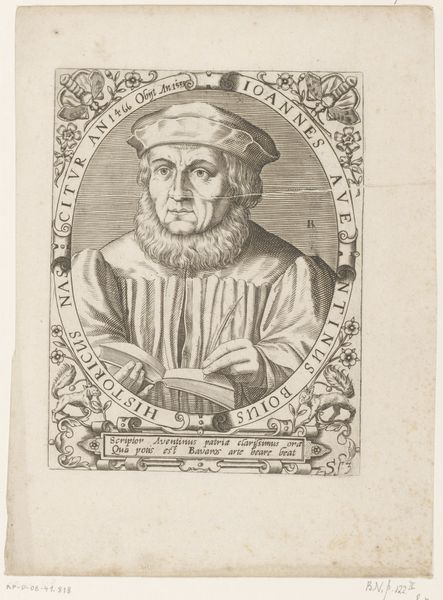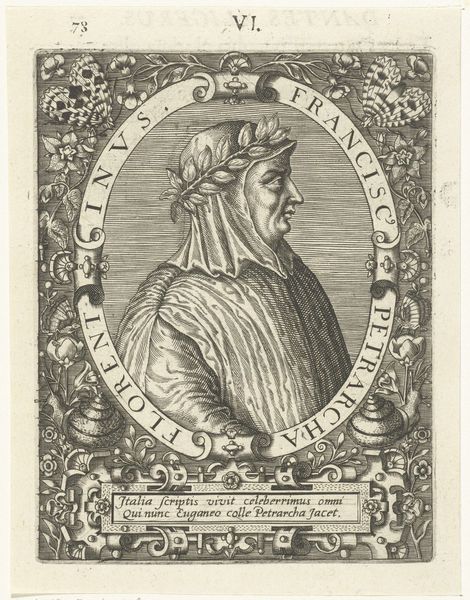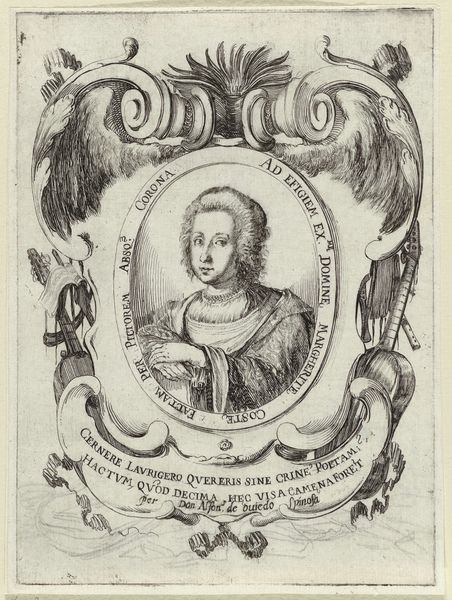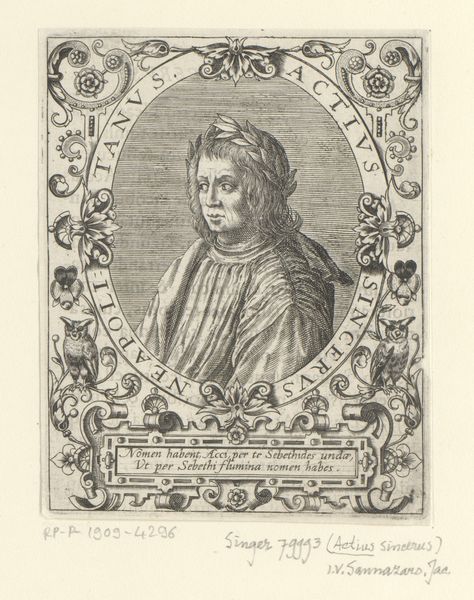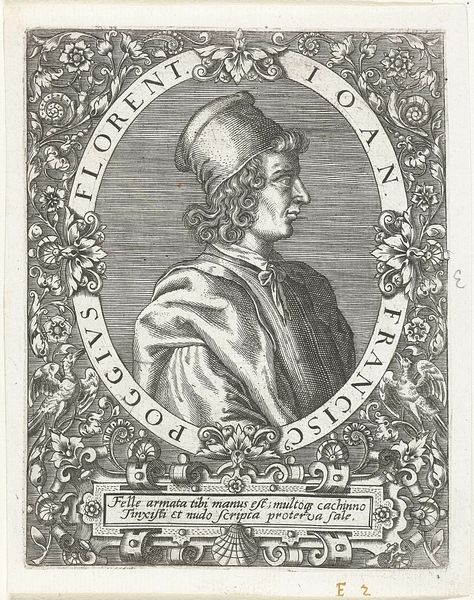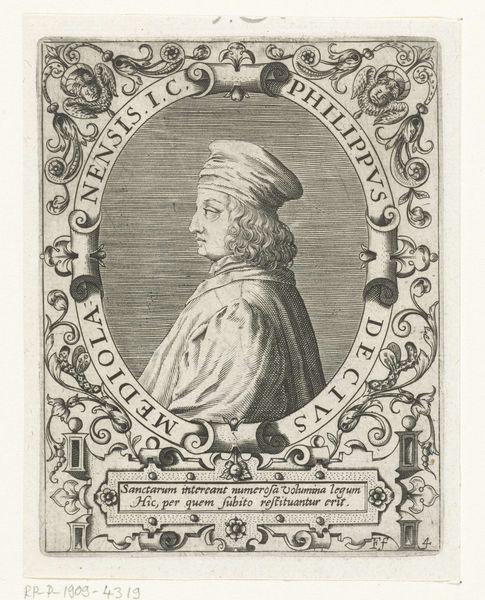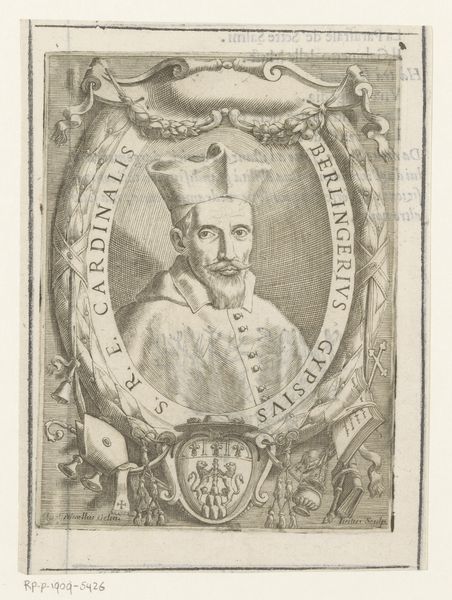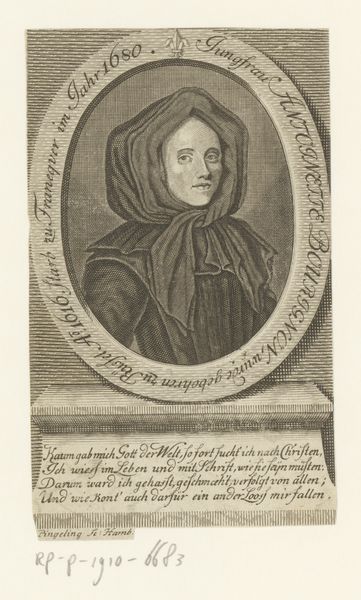
engraving
#
portrait
#
11_renaissance
#
engraving
Dimensions: height 183 mm, width 138 mm
Copyright: Rijks Museum: Open Domain
Curator: This engraving, likely made between 1597 and 1649, purports to be a portrait of Emanuel I, King of Portugal. Note the details achieved through the engraving process; you can almost feel the texture of the paper and the precise cuts made by the artist's tools. Editor: It evokes such a stern image. The stark contrast created through the engraving really accentuates a rigid authority, doesn't it? His gaze feels very fixed, and somewhat unsettling. Curator: The act of creating this type of printed portrait itself says so much. Consider the social context: engravings allowed for the mass production of imagery, spreading the King's likeness far beyond the court, and making it accessible to wider audiences, a relatively novel form of distributing political imagery. Editor: And how carefully framed! We have the king in an oval cartouche, which suggests a carefully preserved relic. Then that ornamented frame… its classical motifs combined with organic details signal power but also continuity through visual symbolism. This connects the depicted individual to a powerful legacy. Curator: The production would have required considerable labor. From the initial design, transferring that design onto the metal plate, the cutting and inking… each step demands specialized skill, and the economics of commissioning and selling these engravings further connects the artwork to early modern networks of production and consumption. It makes you wonder who owned these and where they were displayed. Editor: The border even contains inscriptions above and below the portrait. A kind of textual armour reinforcing the idea of unwavering power. "Jerita bella premit," meaning "he urges on just wars," for instance. It transforms Emanuel I into an unwavering and assertive leader. What purpose did such messaging serve at the time? Curator: It certainly offered a consistent public image that aided in consolidating political control, an example of early modern image management. Think about how artists were crucial in projecting royal authority in societies becoming more reliant on visual representation and distribution through the technologies available then. Editor: Looking at this, I now feel like I have a much stronger sense of how carefully constructed the king's image would have been, not just his dress and countenance, but the way it was presented to his subjects through this medium. Curator: Exactly, it’s more than just a picture of a king; it’s evidence of how power operated within this era's material conditions.
Comments
No comments
Be the first to comment and join the conversation on the ultimate creative platform.
